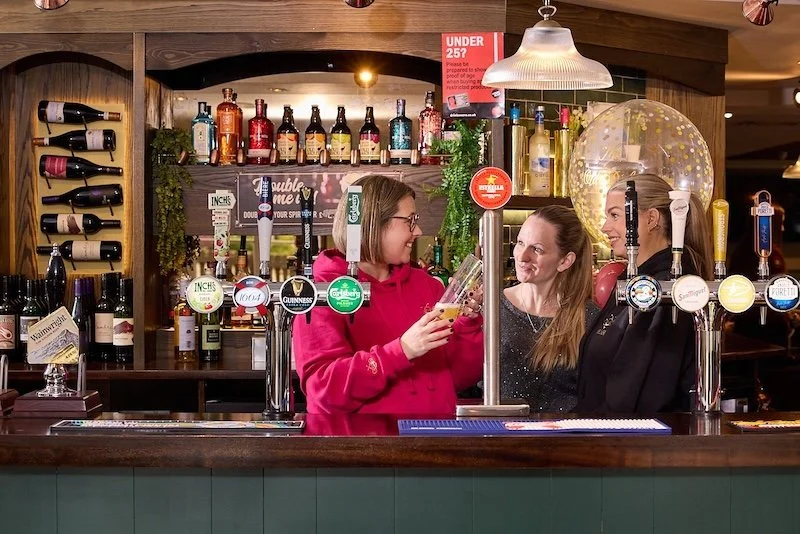Green logistics: how taxi firms can reduce their carbon footprint
Sustainability is no longer a niche concern - it’s a central priority for many businesses, especially in the taxi sector. With increasing awareness and regulatory pressures, leaders in the taxi industry are seeking ways to reduce their carbon footprint.
Here are some practical strategies to implement green logistics and promote sustainability in taxi operations.
Embrace electric and hybrid vehicles
Switching to electric and hybrid vehicles is a significant step towards reducing carbon emissions. These vehicles produce fewer greenhouse gases compared to traditional petrol and diesel engines.
For instance, if you manage a taxi firm, then you could look at the hybrid and electric taxis for sale from providers like Cab Direct as these vehicles can offer reliable and eco-friendly options for taxi fleets.
EVs are not only more environmentally friendly but also cost-effective in the long run, thanks to lower fuel and maintenance costs.
By integrating these vehicles into their taxi fleets, managers can significantly cut down on emissions and demonstrate a commitment to sustainability.
Optimise delivery routes
Route optimisation is a simple yet effective way to reduce fuel consumption and emissions. By using sophisticated software, taxi firms can plan the most efficient routes for their vehicles. This minimises reduces fuel usage, and ensures timely drop offs.
Real-time traffic updates and dynamic route adjustments can further enhance efficiency.
For example, avoiding congested areas and taking alternative routes can save time and reduce idle times, thus lowering overall emissions. Investing in route optimisation tools can yield substantial environmental and financial benefits for taxi businesses.
Regular vehicle maintenance
Maintaining a regular vehicle maintenance schedule is crucial for keeping emissions low. Well-maintained vehicles run more efficiently and produce fewer emissions.
Regular checks on tire pressure, engine performance, and exhaust systems can prevent the release of harmful pollutants. Additionally, using high quality engine oil and timely replacement of air filters can enhance fuel efficiency and reduce the carbon footprint of each taxi.
Utilising renewable energy sources
For taxi firms operating out of central hubs or depots, installing renewable energy sources like solar panels can contribute to a greener operation. Solar energy can power office buildings, charge electric vehicles, and reduce reliance on non-renewable energy sources.
This not only lowers the overall carbon footprint of the business but also sets a positive example for the community.
Partnering with green initiatives
Taxi firms can also partner with green initiatives and environmental organisations. Collaborating with local governments, environmental groups, and other businesses can amplify the impact of sustainability efforts.
These partnerships can provide access to resources, expertise, and funding opportunities aimed at reducing emissions and promoting green transportation solutions.
Providing incentives for both drivers and passengers to make green choices can encourage more environmentally friendly behaviour.
For instance, firms can offer rewards to drivers who consistently follow eco-driving practices or maintain their vehicles well. Passengers who opt for shared rides or choose electric vehicles can also be rewarded with discounts or loyalty points.
Educating customers and community engagement
Education plays a crucial role in promoting green logistics. Taxi firms should actively engage with their customers and the community to raise awareness about the importance of reducing carbon emissions.
By educating passengers on the benefits of choosing greener transportation options, firms can foster a culture of sustainability.
Community engagement initiatives, such as participating in local environmental events or supporting green projects, can further solidify a taxi firm’s commitment to sustainability. This not only enhances the firm’s reputation but also builds stronger community ties.
Monitor and report progress
Tracking and reporting sustainability metrics is essential for continuous improvement.
Taxi leaders should regularly monitor their carbon emissions, fuel consumption, and other relevant indicators. Transparent reporting not only helps in assessing progress but also builds trust with stakeholders.
Setting clear sustainability goals and publicly sharing the progress towards these targets can enhance a taxi firms’ reputation and customer loyalty. It demonstrates a genuine commitment to reducing environmental impact and encourages others in the industry to follow suit.
Future trends in green logistics for taxi firms
As the transportation industry evolves, several emerging trends promise to further enhance the sustainability efforts of taxi firms. Staying ahead of these trends can help companies maintain their competitive edge while contributing to environmental conservation.
Autonomous vehicles (AVs) are poised to revolutionise the taxi industry. These self-driving cars can optimise fuel efficiency and reduce emissions through precise driving patterns and efficient route planning.
By eliminating human error, AVs can ensure smoother acceleration and braking, further enhancing fuel economy. While widespread adoption may still be years away, investing in research and pilot programmes for autonomous vehicles can position taxi firms as leaders in green logistics.
The rise of ride-sharing services has already made significant strides in reducing the number of vehicles on the road. Taxi firms can expand their ride sharing options, encouraging passengers to share rides with others heading in the same direction.
This not only decreases emissions per passenger but also improves the overall efficiency of the fleet. Implementing dynamic pricing models that offer lower fares for shared rides can incentivise more customers to choose this eco-friendly option.































Continue reading…